One of the hottest topics in flooring today is: which types of carpet and flooring are the most eco-friendly?
The environment is a major concern for many people, so when planning a renovation or construction project, finding the most sustainable, environmentally friendly flooring options is a top priority.
And it can be a tricky question — there are many different factors to take into consideration, such as:
- How renewable/sustainable is the material it’s made from?
- What’s the environmental impact of the manufacturing process?
- How far does it have to travel to get to you, and what’s the carbon footprint of shipping it?
- Does the flooring or carpet offgas (release gases that contribute to indoor air pollution) once installed?
- How long will it last before needing replacement?
- Once its lifespan is over, can it be reused or recycled? If not, is it at least biodegradable?
All of these are important questions to consider when deciding on the most eco-friendly flooring options for your home or business.
Cork & Bamboo: Exciting Eco-friendly Flooring Options
Virtually every article you’ll find on eco-friendly flooring options starts off with cork and bamboo flooring — and with good reason! Both are made from fast-growing, renewable natural resources, and their harvesting has much less impact that cutting down trees.
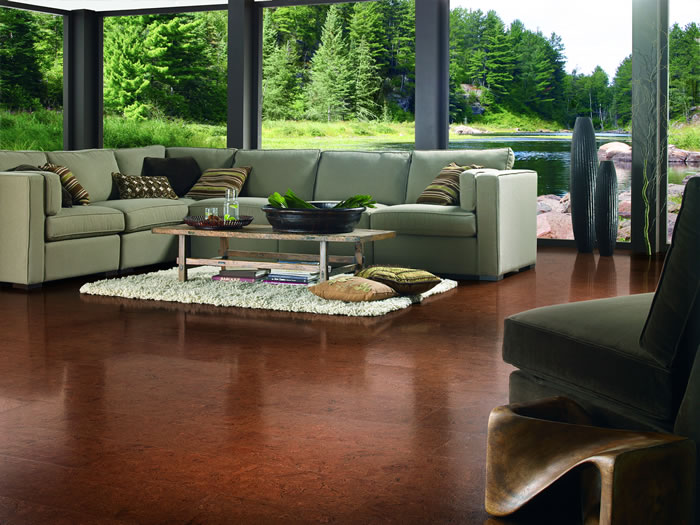
Cork Flooring
Cork flooring is similar to wood, but considerably more environmentally sustainable. It does come from a type of tree, but uses the bark rather than the wood, so the tree doesn’t need to be cut down. After harvesting, the bark takes anywhere from 3-12 years to regenerate — and the same tree can be harvested repeatedly for up to 250 years! Not only that, but some cork flooring is made from recycled waste from the wine cork industry. Now that’s an eco-friendly flooring option!
In your home, cork floors offer a more cushiony feeling than hardwood, and are very easy on your feet. They also provide excellent insulation, which can save energy when heating your home. Cork floors can last up to 30 years if properly protected and maintained — and they’re naturally hypoallergenic and insect-repellent.
Factors to consider:
- Cork is not typically grown in North America, so you need to consider the environmental impact of its shipping. Most of it is grown in the Mediterranean – especially in Portugal — or in northern Africa.
- Environmental protection standards vary between different cork-producing countries.
- Cork floors can be finished with a variety of stains and finishes, and need to be sealed regularly, so you will want to watch out for VOCs in the products they’re treated with.
- As with bamboo, you can now find FSC-certified cork, which is a great way of ensuring it meets the very best environmental and social standards.
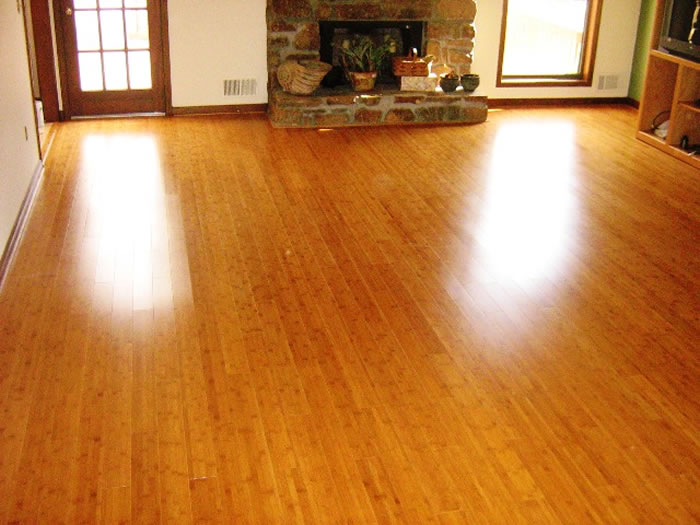
Bamboo Flooring
Like cork, bamboo looks like wood, but it’s actually a form of grass! It’s extremely fast-growing, taking only 3-5 years to mature, as opposed to decades for a tree. Not only that, but bamboo plantations can have important environmental benefits, such as reducing erosion and preventing sediment from entering streams and rivers.
In addition, it’s quite durable, and can be refinished just like hardwood floors can (though it’s a little more difficult to repair if it becomes seriously damaged). It comes in a variety of natural shades, which can be arranged to form interesting patterns, or used on their own for a simpler aesthetic.
Also like hardwood, it comes in solid and engineered forms — though even what’s referred to as solid bamboo flooring is engineered to some extent, as it’s made of solid pieces of bamboo, compressed together with glue to form planks. Engineered bamboo flooring, on the other hand, uses a thin veneer of bamboo over a plywood or fibreboard base.
So what are some of the questions you should keep in mind when considering bamboo as an eco-friendly flooring option?
- Where was it grown? Bamboo is native to China, and most still comes from there, but it’s also grown in Latin America. How far it has to travel to you affects the environmental impact of shipping.
- What kinds of glue are used in the manufacturing? Some glues emit VOCs (volatile organic compounds, a type of indoor air pollutant).
- As with hardwood, the methods of harvesting bamboo can vary widely, sometimes including clearcutting (cutting down all the plants in a wide area, which can be very environmentally damaging).
- One great way to identify how eco-friendly any particular type of bamboo flooring is: is it FSC (Forest Stewardship Council) certified? The FSC is an independent non-profit organization that evaluates the environmental and social impact of forestry operations, and only certifies those that are most respectful of the natural environment and of local human communities.
We don't have a section of bamboo flooring on our web site yet, but we're hoping to add it in the future. In the meantime, feel free to contact us if you're looking for it, as we may be able to source it for you.
Environmentally Friendly Carpet Choices
Carpet can be made from a wide variety of materials, that vary a lot in their characteristics and environmental impact — see our post on The Top 12 Carpet Types for more information. We’ll just touch on some of the most eco-friendly carpet options here.
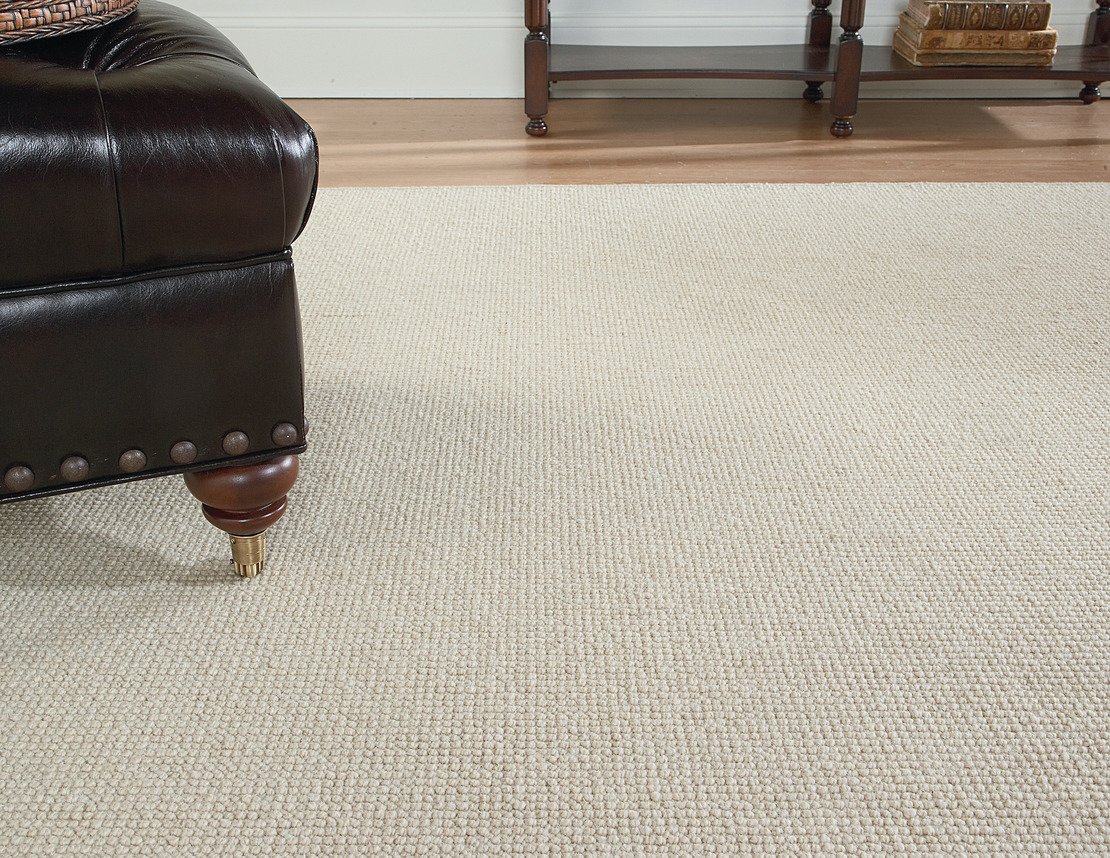
Wool Carpet
Wool is a natural, renewable resource — a traditional material that’s been in use since ancient times — and is sheared from sheep without harming them.
Wool carpets are very, very long-lasting, and biodegradable when they do meet the end of their lives, which is a big plus for their environmental footprint. They’re also hypoallergenic, good for people with chemical sensitivities, and can actually improve indoor air quality, by trapping pollen, dust and other particles, and absorbing gases.
Wool does not emit VOCs the way some synthetic materials can, but it is possible for it to absorb them from other sources, like paint, and release them over time. So if you’re planning renovation, you should probably paint before installing wool carpeting, and if repainting a room, remove any wool area rugs temporarily.
One potential area of concern is that sheep farming, like many other forms of agriculture, can vary in its environmental impact, and also in animal welfare standards. And it’s not always possible to know from a finished product how the sheep were raised. Thankfully, there are some standards and certifications evolving to monitor that, like the Responsible Wool Standard (RWS). Additionally, some wool-producing countries, like New Zealand, are known for having especially high environmental and animal welfare standards.
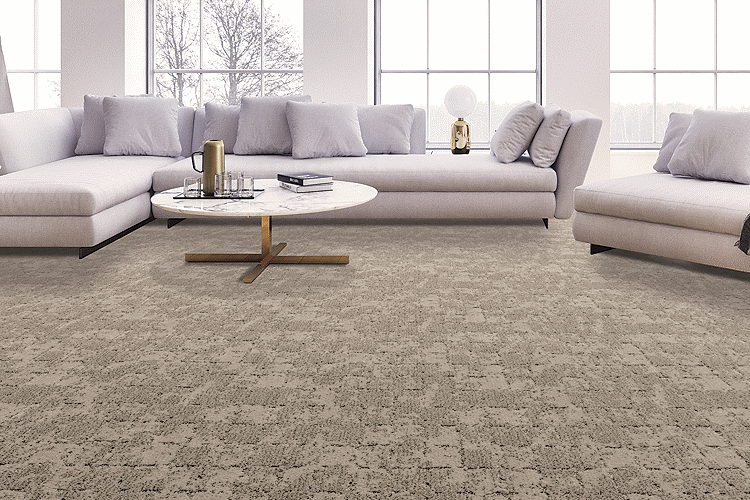
Recycled PET Carpet
Synthetic carpets are often considered a less eco-friendly carpet option, since they’re made from non-renewable petrochemicals, some of which also offgas VOCs. But one very exciting development in eco-friendly carpet is the use of recycled PET from plastic bottles!
PET — one of the most readily recyclable plastics — stands for polyethylene terephthalate, which belongs to the polyester family of plastics. So recycled PET carpet is a form of polyester carpet. The exact proportion of recycled content varies, but can be up to 100%!
PET carpets are naturally stain-resistant, without requiring the chemical treatments used to protect nylon carpets from stains. They are widely considered to be better quality than other polyester carpets, as the resins used in food-grade plastic containers have to meet a higher quality standard than other polyester yarns. And they are quite low-VOC compared to other synthetic carpet options.
There are also various certification standards for carpets that produce the least VOCs and other emissions, like GreenGuard and Green Label Plus.
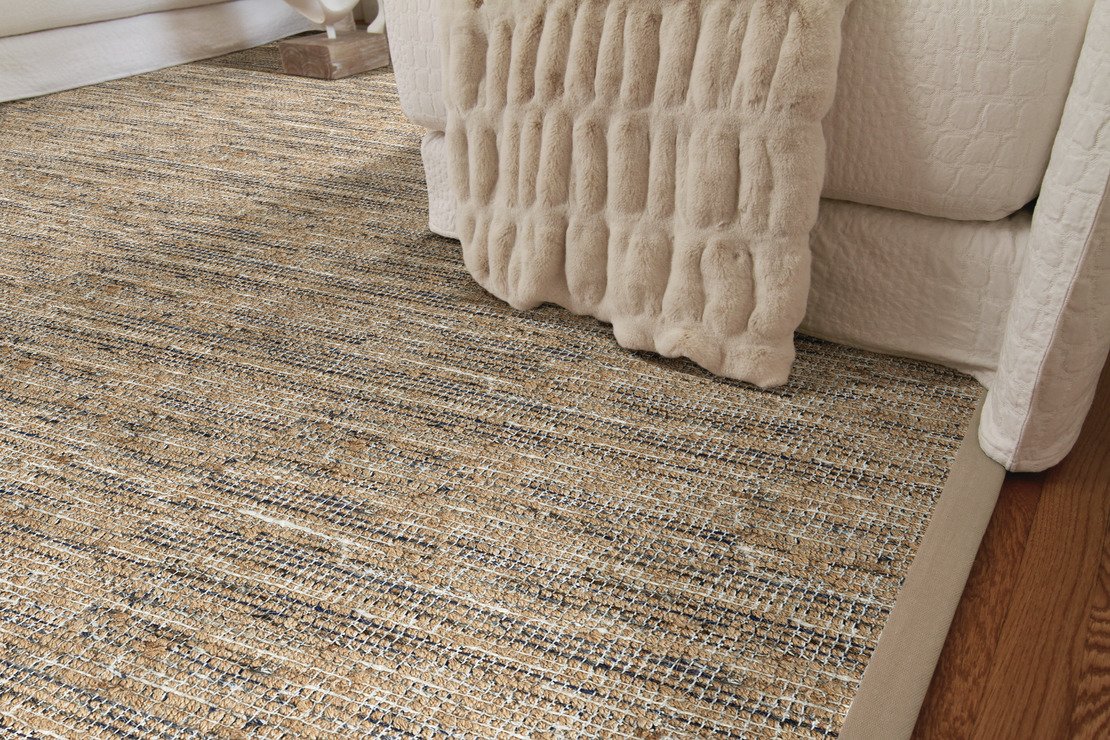
Plant-fibre Carpet (Sisal, Seagrass, etc.)
One increasingly popular eco-friendly carpet option is plant-fibre carpet, like sisal, seagrass, jute, etc. There’s a detailed rundown on the different types in our carpet fibres article, but what they all have in common is that they’re made from renewable natural materials and are totally biodegradable, making them an excellent form of environmentally friendly flooring.
All of the plant fibre carpets have a distinctively earthy, natural look, but the different fibres vary in their softness, durability, stain resistance and other factors — again, see our carpet fibres article for more. Frequently, there’s a tradeoff between softness and strength.
They’re generally all considered very eco-friendly carpet options, though since most of the plants they come from are not grown in North America, once again you have to consider the environmental impact of shipping, and different countries and companies may vary in how environmentally responsible their harvesting methods are. Still, compared to a lot of other flooring options, they’re an excellent environmental choice.
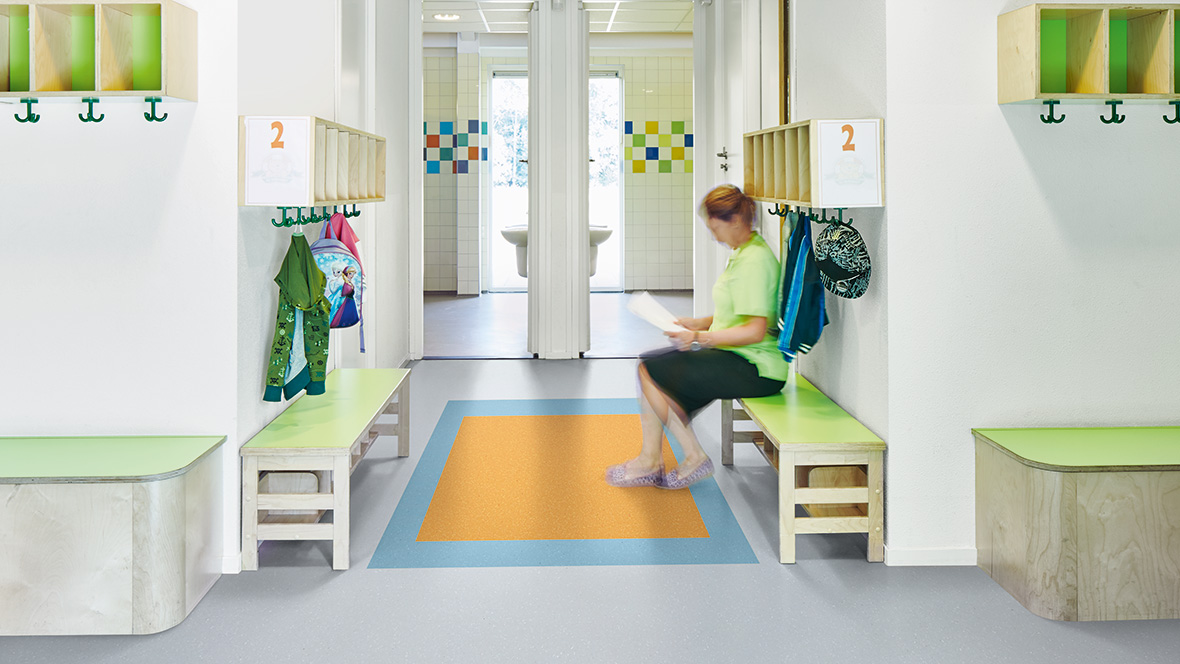
Marmoleum: in an Eco-friendly Class of Its Own
People often confuse the various types of hard-surface flooring, like linoleum, laminate and vinyl, and sometimes those who don’t know better use the word “linoleum” to refer to all of them. But in reality, there are big differences — and a clear environmental winner.
While laminate and vinyl are partially or wholly synthetic, real linoleum is a sustainable, naturally-based and very eco-friendly flooring choice! The name is a clue: “lin-” as in linseed, and “-oleum” as in oil. (Some of you might be familiar with linseed oil from its use in paints and as a wood finish — it’s a type of flaxseed oil that polymerizes as it dries, meaning that it hardens to a plastic-like texture.)
Developed over 150 years ago, linoleum is made from a blend of natural materials: linseed oil of course, plus a variety of other materials that may include wood dust, cork dust, powdered limestone, jute fibres and various plant resins. It was popular from the 1870s until the mid-20th century, when it began to be replaced by less expensive vinyl floor coverings.
But in recent years it has made a big comeback, particularly in the form of Marmoleum, a fantastic, and very eco-friendly, flooring material.
Compared to synthetic hard-surface flooring, Marmoleum is just as water-resistant and easy to maintain, but considerably more durable, lasting up to 40 years, as opposed to 10-20 for vinyl and 15-25 for laminate. And most importantly, for the purposes of this article, it’s made from 97% natural, 72% renewable and 43% recycled raw materials; its manufacturing uses 100% green energy, and reportedly has the lowest carbon footprint and overall environmental impact of any floor covering!
Sustainable Wood Flooring Options
Traditional solid hardwood flooring is a popular choice, but considering that hardwood trees such as oak can take up to 40 years to mature, and forestry methods can vary widely in their degree of sustainability and environmental impact, it’s not necessarily the most eco-friendly flooring option — though as with cork and bamboo, looking for FSC certification can help you identify the most sustainably sourced hardwood.
Some other alternatives for those who love wood floors include:
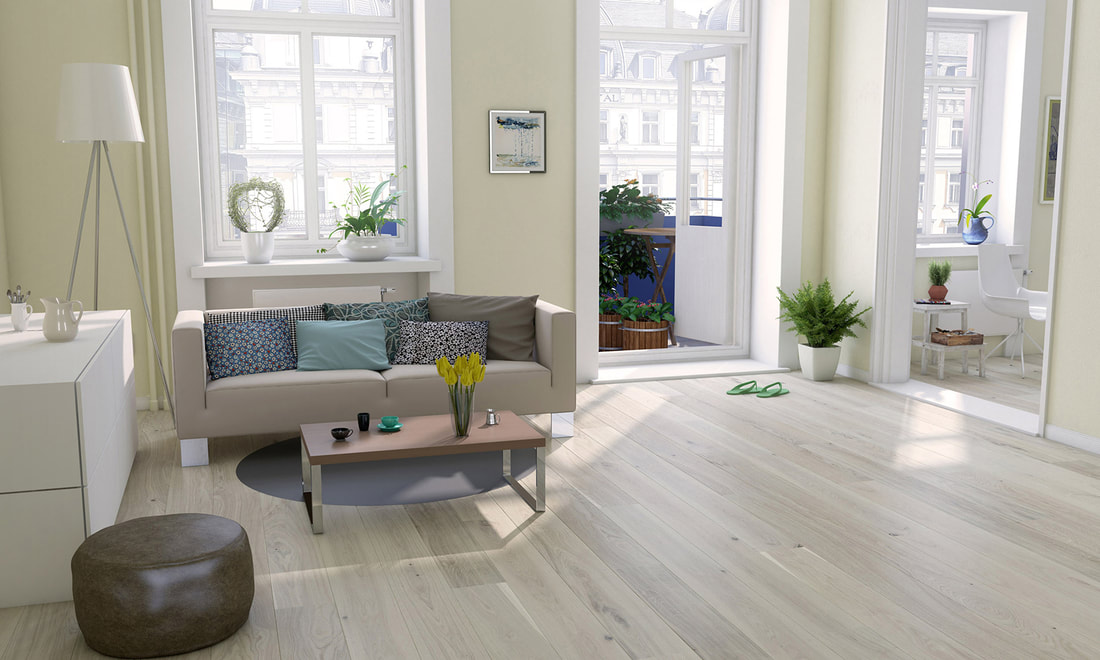
Engineered Hardwood
An increasingly popular choice, engineered hardwood is made from a solid hardwood veneer over a plywood core. This reduces the environmental impact, because the thin cuts of wood used for the veneer produce much less waste than traditional planks and boards, so each tree creates more flooring and less waste. And the types of trees used for the core are typically faster-growing than hardwoods.
One thing you will want to pay attention to is the glues and sealants used — some can generate VOCs, but others do not. One way to identify the safest engineered hardwood is to look for a FloorScore certification, which guarantees a minimum of indoor air pollution of any kind.
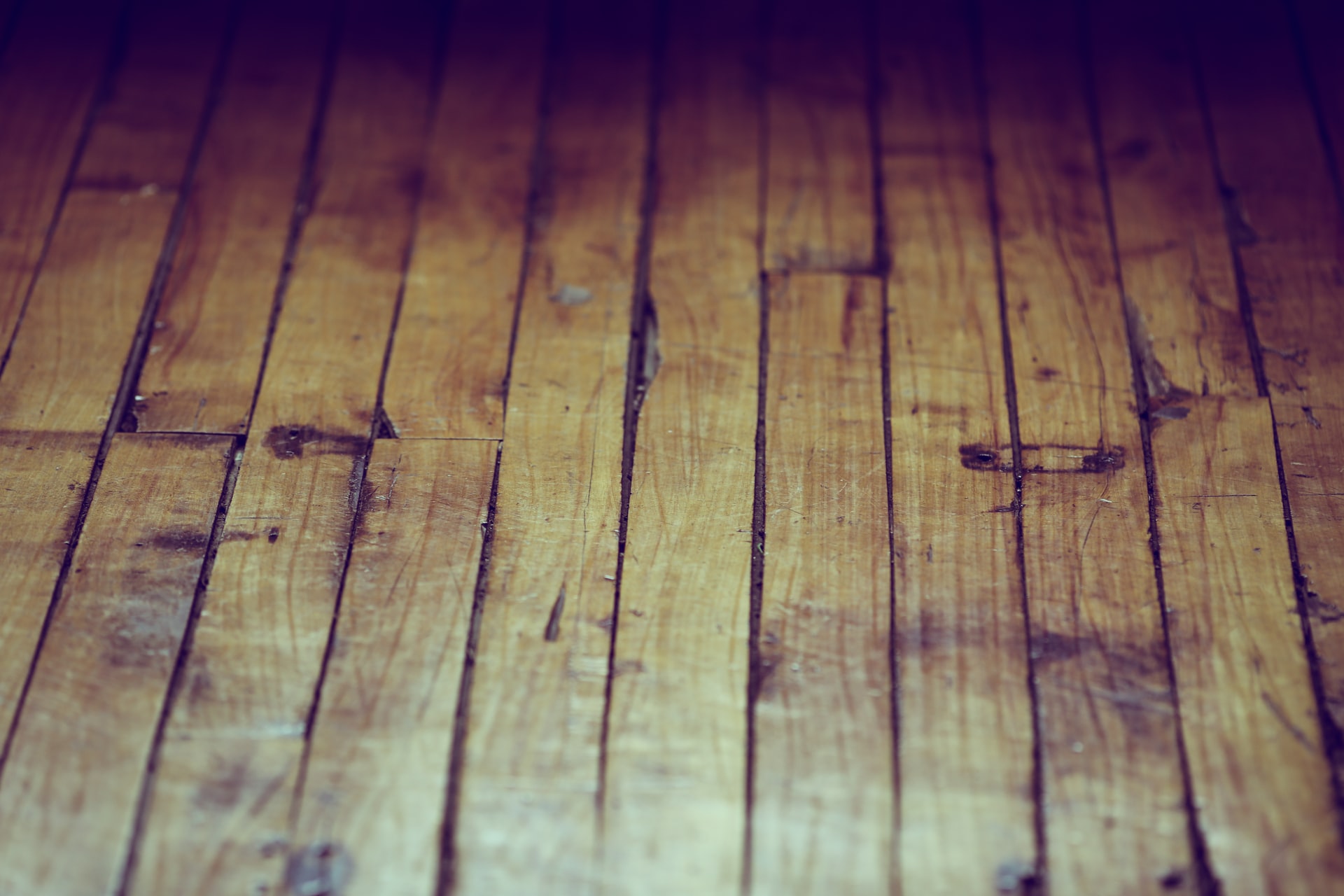
Reclaimed Hardwood
Another hardwood option that’s gaining in popularity is reclaimed hardwood — wood that’s been reclaimed from old buildings that are being renovated or demolished, and given new life by reusing it as flooring.
One catch is that wood in older buildings has sometimes been painted with lead paint, or otherwise toxic finishes, so it’s important to be selective. Also, you’ll want to be sure that whatever is used to refinish it is low-VOC. However, if you make smart choices, reclaimed hardwood is one of the most eco-friendly flooring options around!
Unfortunately, it’s still a specialty item and can be expensive and difficult to source. We can’t guarantee its availability, but we’re always happy to look into sourcing it for you!
Tile: an Enduring Environmental Choice
One often-overlooked eco-friendly flooring option is tile. Durable, low- to no-emission (depending on the adhesives used), and usually made from natural and/or recycled material, tile is a sustainable flooring option well worth considering! Though often associated with kitchens and bathrooms because it’s so water-resistant, tile comes in countless varieties to suit almost any room in the house.
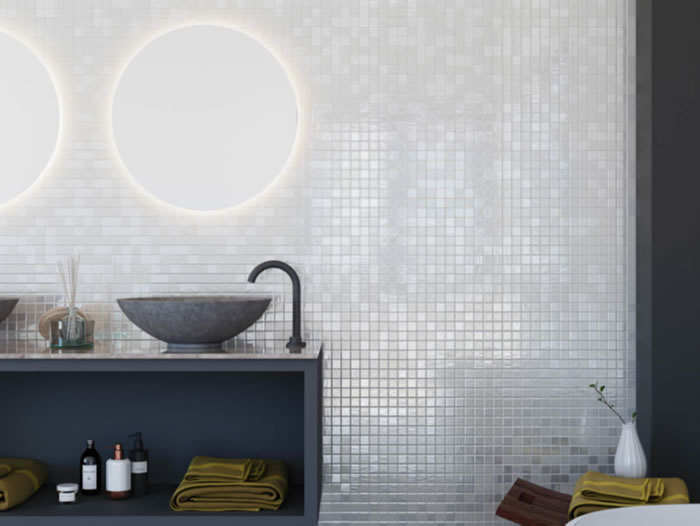
Glass Tiles
When it comes to environmental impact, glass tiles are an excellent choice. They require much less energy to produce than porcelain or ceramic tile, and are frequently made from glass recycled from other sources.
Not only are glass tiles beautiful and eye-catching — they also reflect light, brightening any room and potentially saving energy on lighting. They can be used on walls as well as floors, and their only down side is that they’re less durable than other forms of tile.
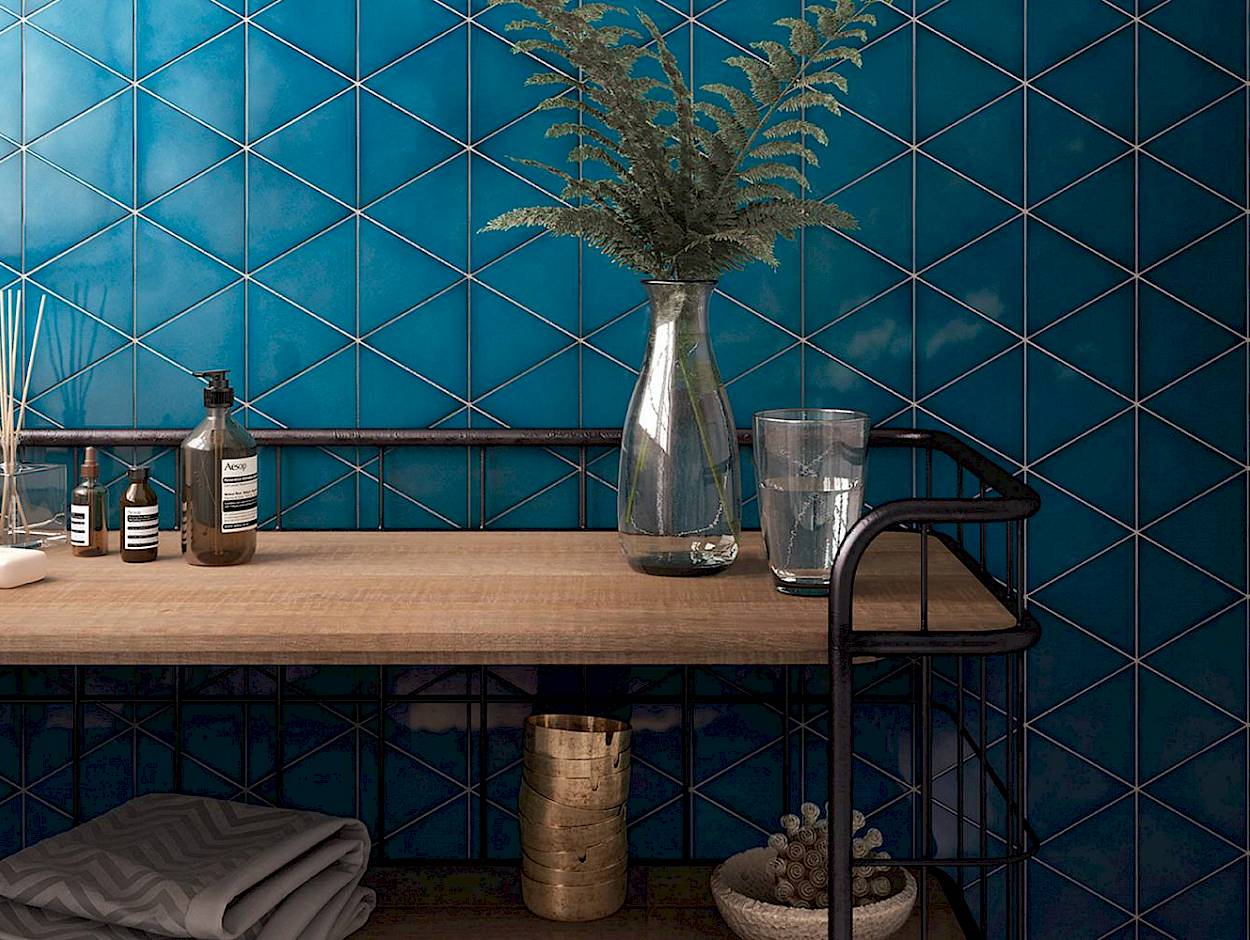
Porcelain & Ceramic Tile
Porcelain and ceramic tiles are made from natural materials (clay, to be precise), and are durable enough to have a very long life cycle. They stay cool in hot weather, potentially saving energy on air conditioning. Their only disadvantage as an eco-friendly flooring option is that they’re made by firing clay at extremely high temperatures, which is a significant energy cost.
What’s the difference between ceramic and porcelain tile? Basically, porcelain is a more specialized type of ceramic, made from a super-fine grade of clay for an especially smooth, dense and water-resistant form of tile (also typically more expensive, due to its quality and the materials used). Porcelain is also fired at particularly high temperatures compared to regular ceramic, so it has a heavier environmental impact.
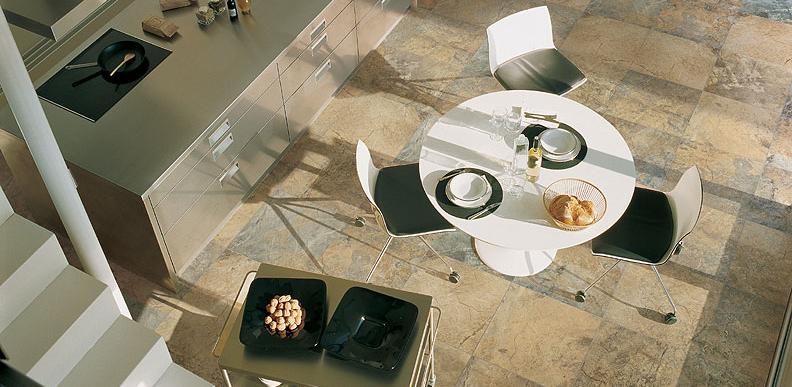
Stone Tile
Stone is of course a natural material, and stone tile be very beautiful, ranging from polished marble to the rustic, textured look of slate and quartzite. It’s super durable, low-maintenance, and like all tile, doesn’t contribute to indoor air pollution as long as you choose low-VOC adhesives and sealants.
From an environmental perspective, though, you do need to pay attention to where and how it’s mined, and also be aware that due to its weight, the energy footprint of shipping it can be high.
There are other eco-friendly flooring options on the horizon, but the ones we’ve listed above are the most popular right now. We have examples of many of them right here on our web site, and many more in the store, plus we can often source custom or specialty items. Contact us to find out more!
- Log in to post comments
